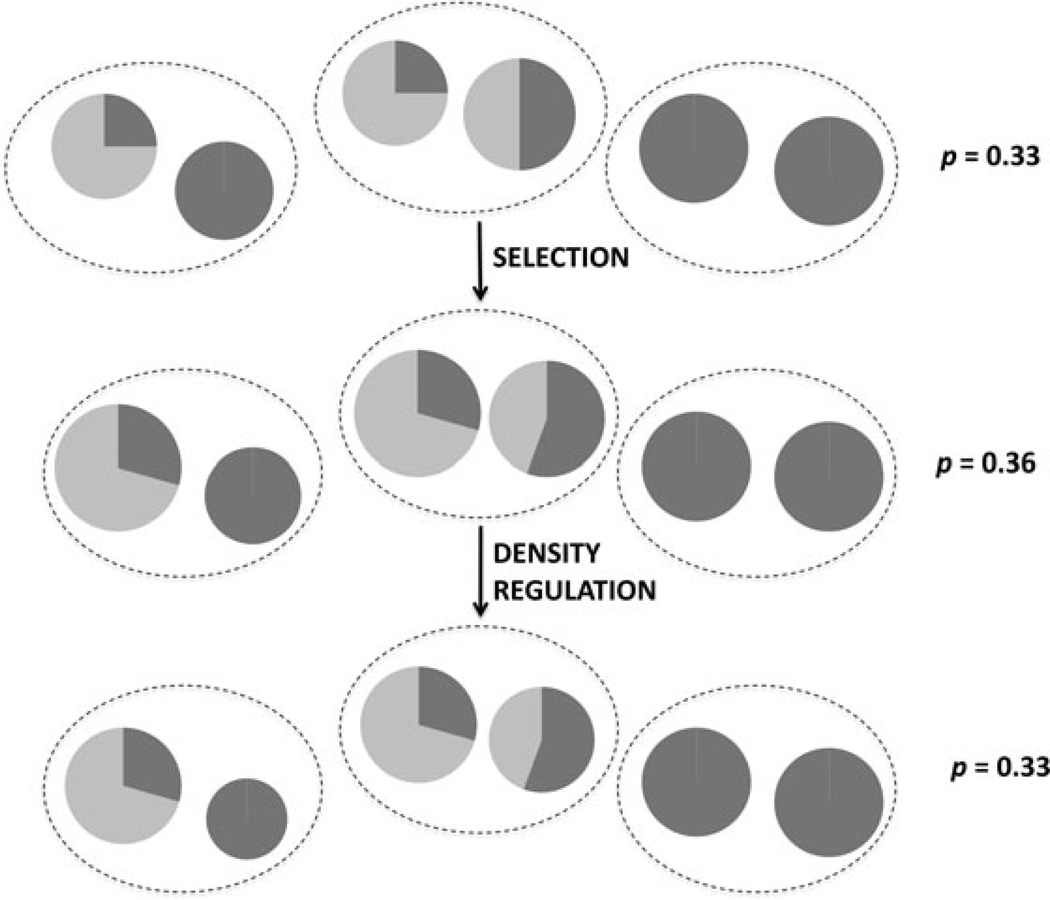Figure 4.
Individuals compete in a density-regulated neighborhood wherein the total number of individuals is kept at a constant value, K. In this case, each regulation group is composed of two social groups. The fitness effects in the figure are b = 0.8 and c = 0.2, and altruists are designated in light gray. After selection, K individuals are chosen at random to form the next generation such that each neighborhood contributes the same proportion of individuals. After density regulation, groups retain their same post-selection relative sizes within each neighborhood, but their absolute size is constrained by K. Altruism evolution is impeded by the inability of altruist-rich regulation groups to contribute more than altruist-poor neighborhoods to the next generation, although this constraint is weakened by larger spatial scales of regulation. For comparison, final frequency of altruists in the figure would be p = 0.31 under strict local density regulation.

